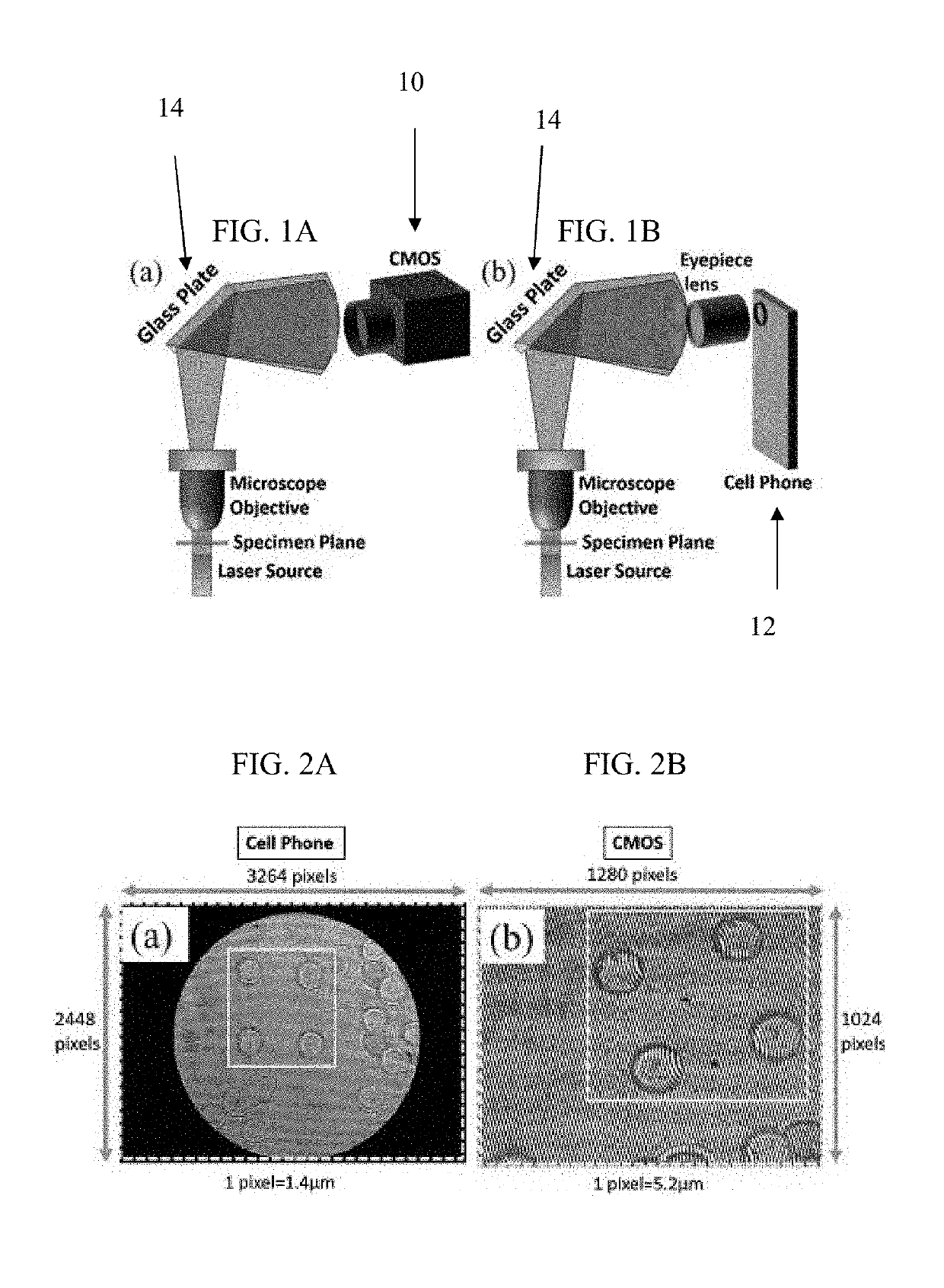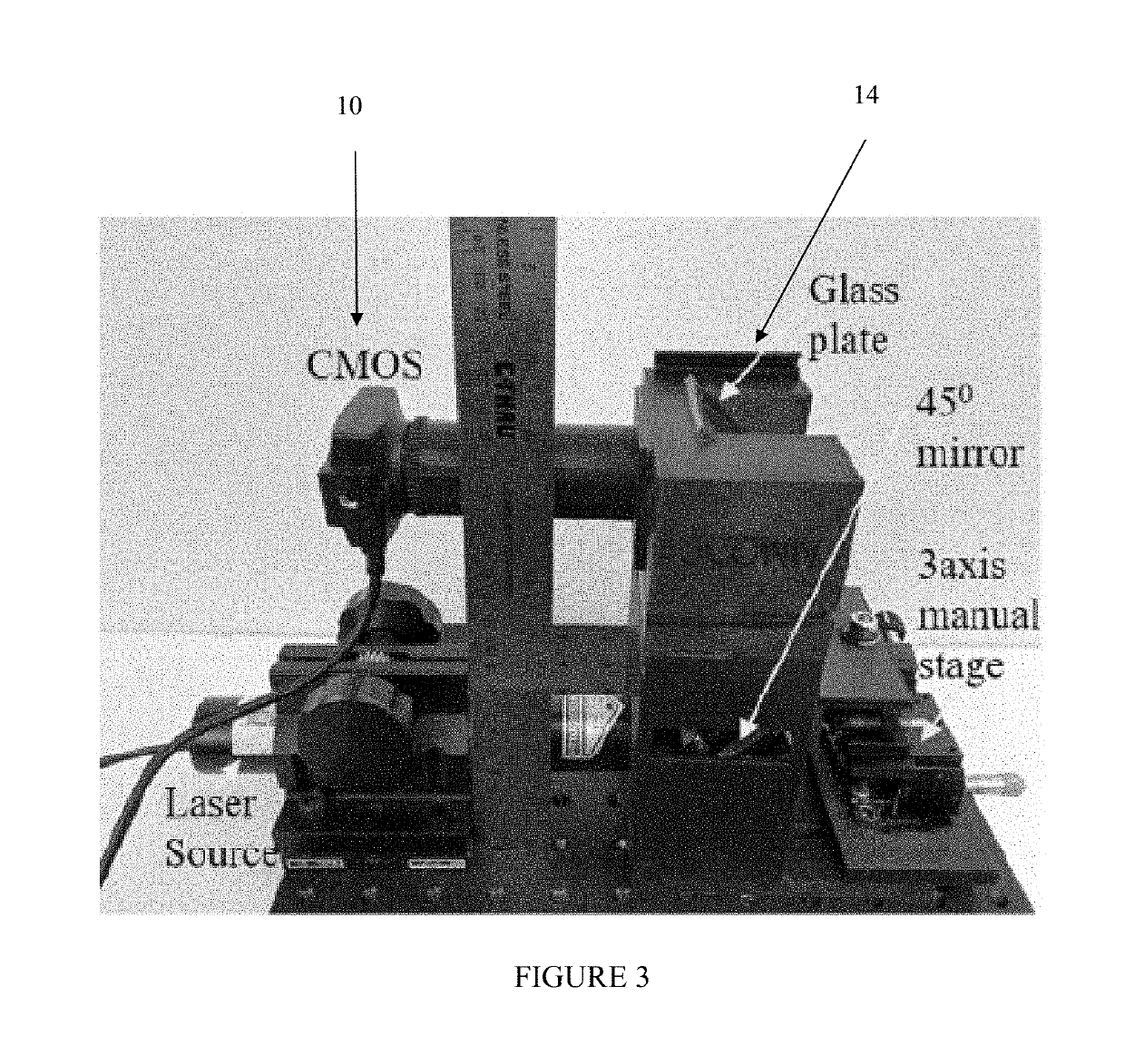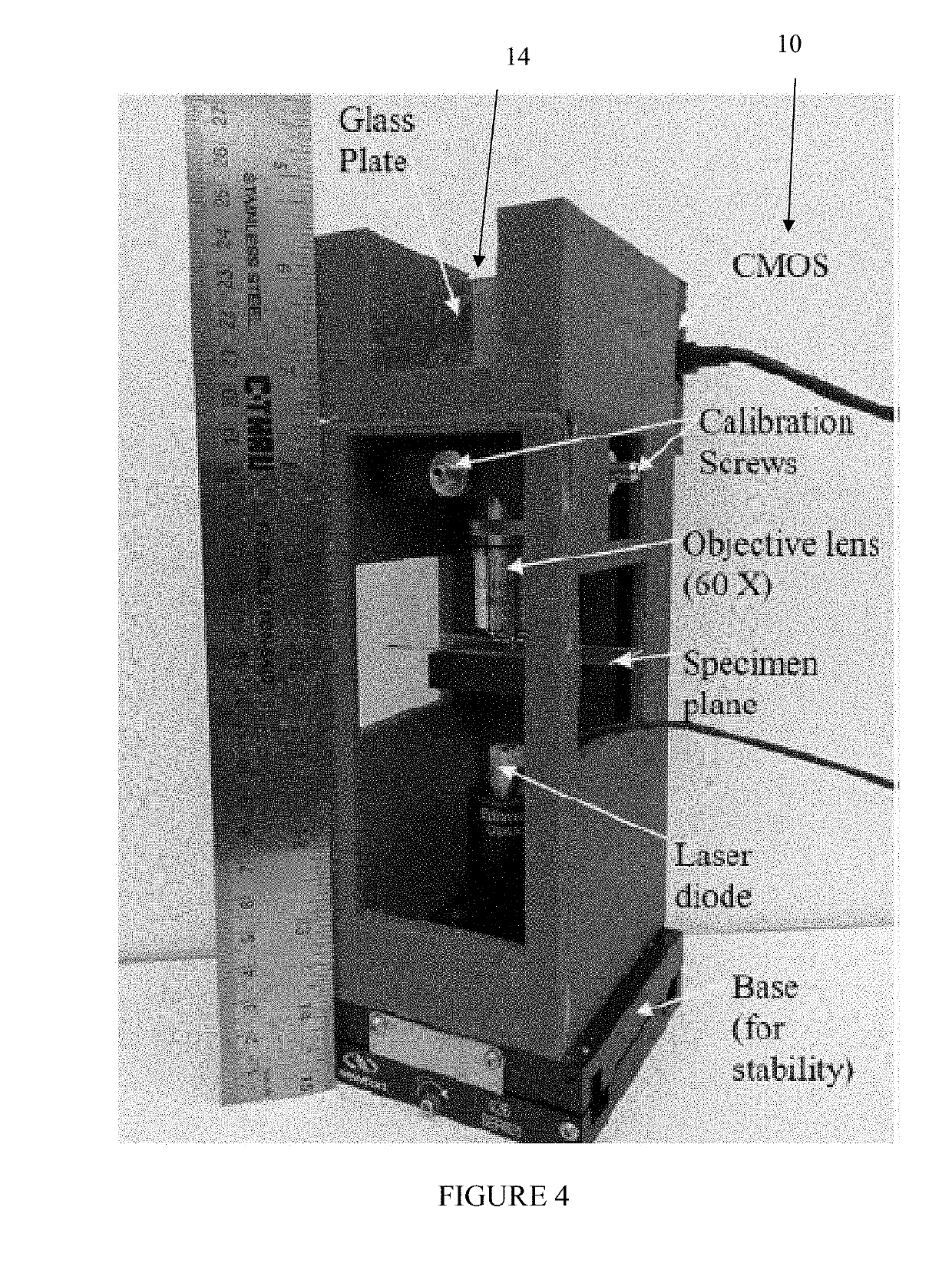Automated Cell Identification Using Shearing Interferometry
a technology of shearing interferometry and cell identification, applied in the field of systems and methods for automated cell identification/classification, can solve the problems of high cost and cumbersome analysis
- Summary
- Abstract
- Description
- Claims
- Application Information
AI Technical Summary
Benefits of technology
Problems solved by technology
Method used
Image
Examples
example 1
nd Field-Portable 3D Printed Shearing Digital Holographic Microscope for Automated Cell Identification
[0118]In exemplary embodiments, the present disclosure provides a low-cost, compact, and field-portable 3D printed holographic microscope for automated cell identification / classification based on a common path shearing interferometer setup. Once a hologram is captured from the portable setup, a 3D reconstructed height profile of the cell is created. One can extract several morphological cell features from the reconstructed 3D height profiles, including mean physical cell thickness, coefficient of variation, optical volume (OV) of the cell, projected area of the cell (PA), ratio of PA to OV, cell thickness kurtosis, cell thickness skewness, and the dry mass of the cell for identification using the random forest (RF) classifier. The 3D printed prototype can serve as a low-cost alternative for the developing world, where access to laboratory facilities for disease diagnosis are limited...
example 2
ll Disease Diagnosis Based on Spatio-Temporal Cell Dynamics Analysis Using 3D Printed Shearing Digital Holographic Microscopy
[0162]This Example provides a spatio-temporal analysis of cell membrane fluctuations to distinguish healthy patients from patients with sickle cell disease. A video hologram containing either healthy red blood cells (h-RBCs) or sickle cell disease red blood cells (SCD-RBCs) was recorded using a low-cost, compact, 3D printed shearing interferometer. Reconstructions were created for each hologram frame (time steps), forming a spatio-temporal data cube. Features were extracted by computing the standard deviations and the mean of the height fluctuations over time and for every location on the cell membrane, resulting in two-dimensional standard deviation and mean maps, followed by taking the standard deviations of these maps. The optical flow algorithm was used to estimate the apparent motion fields between subsequent frames (reconstructions). The standard deviati...
example 3
[0227]Digital holographic microscopy (DHMIC) is a label-free imaging modality that enables the viewing of microscopic objects without the use of exogenous or contrast agents. DHMIC provides high axial accuracy; however, the lateral resolution is dependent on the magnification of the objective lens used. DHMIC overcomes two problems associated with conventional microscopy: the finite depth of field, which is inversely proportional to the magnification of the objective, and low contrast between the cell and the surrounding media. Cells alter the phase of the probe wave front passing through the specimen, depending on the refractive index and thickness of the object. Several methods have been developed to transform the phase information of the object into amplitude or intensity information, but these methods only provide qualitative information and lack quantitative information. Staining methods, such as the use of exogenous contrast agents, can enhance the image contrast, but it might...
PUM
 Login to View More
Login to View More Abstract
Description
Claims
Application Information
 Login to View More
Login to View More - R&D
- Intellectual Property
- Life Sciences
- Materials
- Tech Scout
- Unparalleled Data Quality
- Higher Quality Content
- 60% Fewer Hallucinations
Browse by: Latest US Patents, China's latest patents, Technical Efficacy Thesaurus, Application Domain, Technology Topic, Popular Technical Reports.
© 2025 PatSnap. All rights reserved.Legal|Privacy policy|Modern Slavery Act Transparency Statement|Sitemap|About US| Contact US: help@patsnap.com



